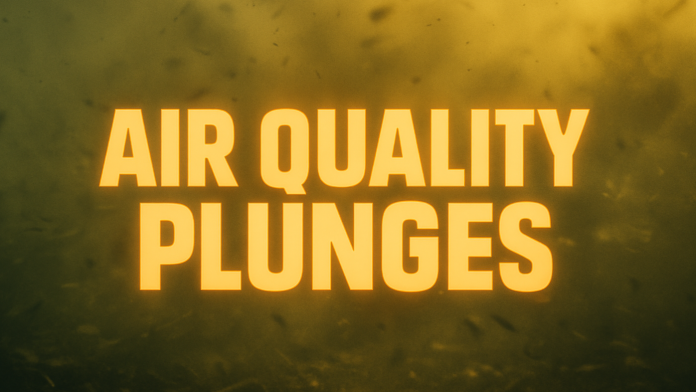Detroit, Michigan – A choking blanket of smoke has settled over much of the East Coast and Upper Midwest to start the week, dragging air quality to its lowest point so far this summer in major cities from Milwaukee and Detroit to New York and Boston. With wildfire smoke from Canada pooling at ground level, officials have issued Air Quality Alerts that stretch from the Great Lakes to the Atlantic, covering more than 80 million Americans under advisories through Tuesday.
According to the National Weather Service and state agencies, particle pollution (PM2.5) surged into the “Unhealthy for Sensitive Groups” range across vast swaths of Michigan, Wisconsin, New York, New Jersey, Pennsylvania, and all of New England Monday. Many areas, including the Milwaukee metro, Detroit, Cleveland, Albany, Boston, and greater New York City, are expected to see brief spikes into the “Unhealthy” (Red AQI) category, where even healthy adults may feel symptoms outdoors.
The Michigan Department of Environment, Great Lakes, and Energy warns residents across Detroit, Flint, Grand Rapids, and Ann Arbor to keep windows shut, run air conditioning with high-quality filters, and avoid outdoor exertion—especially for people with asthma, heart disease, or any respiratory condition. Health officials in New York and Massachusetts echoed those concerns, urging families, schools, and businesses to limit outdoor activities for children and vulnerable groups. In Milwaukee, Madison, and Green Bay, state agencies are advising people to reschedule outdoor work, move activities indoors, and check in on elderly neighbors.
People across these regions should monitor for warning signs like chest tightness, coughing, burning eyes, dizziness, and shortness of breath. Those with existing health issues should have rescue inhalers or medication nearby and call a healthcare provider if symptoms worsen. Even healthy residents are encouraged to stay indoors and avoid heavy exercise or yardwork until conditions improve.
The thickest smoke, visible as a milky haze and the smell of burning, is likely to persist into early Tuesday for most of the Midwest and Northeast, with only slow improvement as winds gradually disperse the pollution. Meteorologists say a change in the weather pattern could bring relief by Wednesday, but a stubborn high-pressure system may keep smoke close to the surface for longer in some communities.
Officials ask everyone to avoid burning wood outdoors and to limit driving when possible to reduce additional pollution. Stay tuned to local advisories, follow air quality trackers like AirNow.gov, and expect updates or new alerts if smoke persists.




